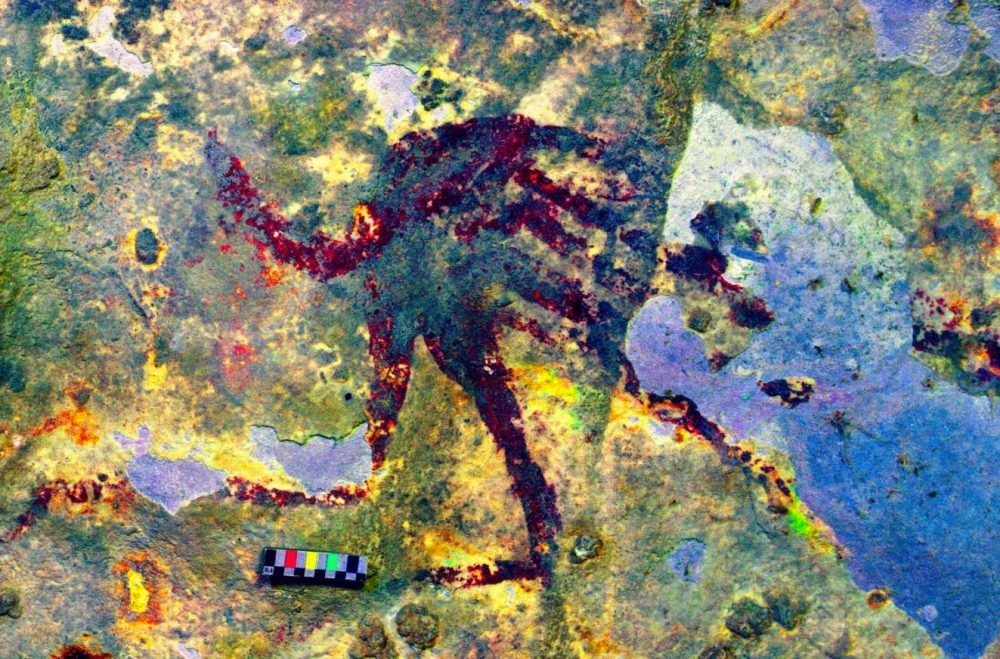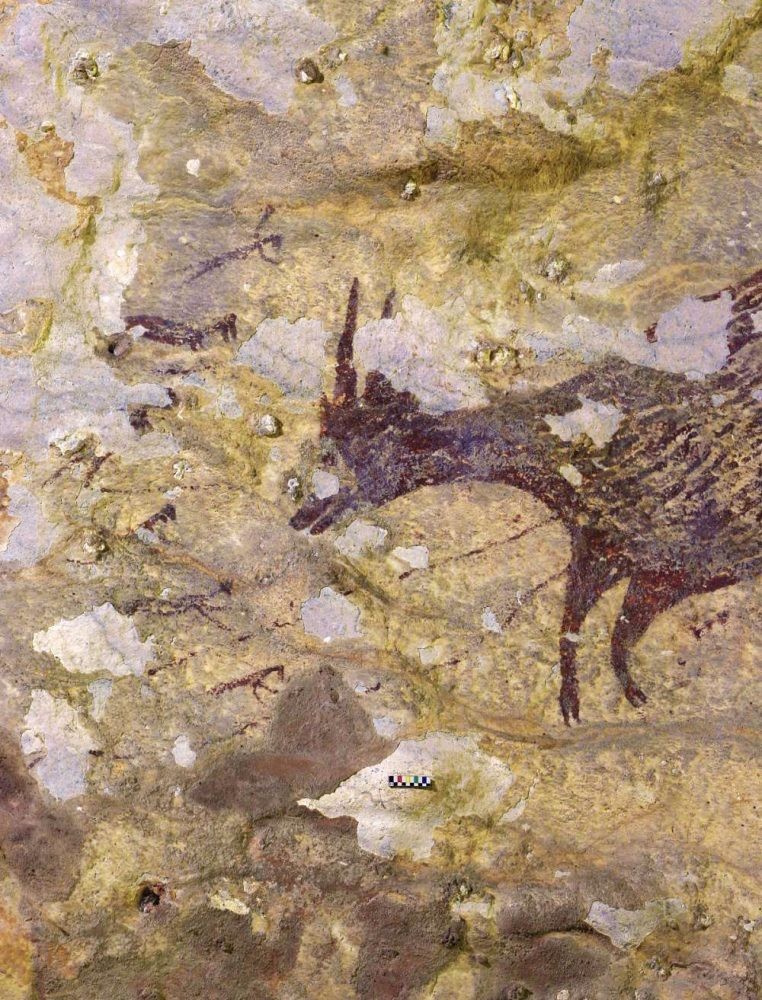44,000-Year-Old Cave Art Reveals Ancient Humans Depicted Shapeshifting Beings
It is considered the oldest cave art in the world, and it depicts incredible scenes showing what experts believe are “shape shifting” creatures.
Around 44,000 years ago, modern humans were already great artists. Although we have discovered many fine ancient art examples, it has been long debated as to what cave art was the oldest in the world. Now, a group of researchers may have found the answer. This unique cave art is believed to depict the oldest hunting scene in the world while representing the first figurative work of art created by modern man. According to the researchers, it is the earliest evidence of our ability to imagine supernatural beings’ existence. This, in turn, may explain the origin of our spiritual and religious beliefs, which draw their roots much earlier in history than we’ve previously thought.
Oldest Cave Art and shapeshifting creatures?
A team of archaeologists from the Australian Griffith University has identified a cave in Sulawesi (Indonesia) with amazing cave paintings, which they said date back at least 44,000 years ago. The cave art depicts incredible, supernatural creatures: the ancient humans drew human figures with animals’ characteristics using spears or ropes to catch large mammals. This may be the first evidence of therianthropy, the mythological ability of human beings to metamorphose into other animals using shapeshifting. The Leang Bulu Sipong 4 cave is one of the hundreds of caves in the Maros-Pangkep limestone karst region in southern Sulawesi.
In 2014, the same team discovered at the same place one of the oldest cave art motifs, the red outline of a human hand, created at least 40,000 years ago.

Unprecedented
The discovery, however, is unprecedented in many ways. Ancient humans decided to paint, on a 4.5-meter-wide piece of stone, eight small human figures that appear to be killing or capturing six fleeing mammals with long spears or ropes: two warty pigs from Sulawesi and four dwarf buffaloes known as anoas. The latter are small but fierce bovids that still inhabit the forests of the island. All elements are painted with dark red pigment, with the same technique, color, and artistic style.
However, it is the hunters that were drawn onto the rock that attracted the attention of experts. Although the beings depicted resemble humans, they have heads or other parts of the body that resemble animals. Some creatures were even depicted as having a kind of tail. This is unprecedented. To obtain the strange hunting scene’s age, the team measured the radioactive decay of uranium and other elements within mineral growths in the cave. The ancient works of art were dated between 35,100 and around 44,000 years ago.
A visual narrative
The experts have revealed that this is the first time a detailed visual narrative or “story” has been identified in such an early period throughout the world. According to researchers, the most standard theory is that the first rock art appeared in Europe and consisted of abstract symbols. Thirty-five thousand years ago, this simple art became more complex as ancient humans added figurative paintings of horses and other animals. It was also considered that innovative concepts such as compositions with multiple interacting subjects (scenes) and the representation of imaginary entities (therianthropy) were rare, if not inexistent, until about 20,000 years ago.

Evolution of art
The experts revealed that the cave painting of Leang Bulu Sipong 4 suggests that Paleolithic art did not evolve continuously as was believed, at least not in Southeast Asia. The researchers point out that the most exciting aspect of the discovery is that the oldest cave paintings date back at least 44,000 years ago and already feature ey components related to modern cognition: hand templates, figurative art, the narration of stories, and even therianthropy. The experts concluded that although fascinating on many levels, we will probably never understand the exact significance. However, many rock art elements suggest combining components such as spirituality, religion, and perhaps even mythology.
Of extreme importance
Archaeologists believe that this discovery, together with the 40,000-year-old cave art found in Kalimantan, on the island of Borneo, makes Indonesia one of the most important places in the world to understand the beginnings of rock art and the evolution of modern human cognition. In addition to the age of the cave art motifs discovered by experts, the fact that they feature clear examples of therianthropy is fascinating, experts have revealed. The most well-known form of therianthropy is found in stories concerning werewolves. The term comes from the Greek theríon meaning “wild animal” or “beast,” and anthrōpos, meaning “human being.” To understand more about the 44,000-year-old cave art, the researchers decided to sample the figurines with cat-headed men.
A great sense of imagination
The experts concluded that the ancient artists were good storytellers with a great sense of imagination and that the depictions had “no place in reality.” The experts further explained that humans either developed these elements of creative history simultaneously in different parts of the world, or it is a feature developed by even older human ancestors spanning back perhaps even further back in history. The figurines depicted inside the Sulawesi cave are illustrated with the ability to jump and fly through the air.
However, it is interesting to note that the cave art depicts humanoids painted horizontally and at a different scale than the animals which these creatures are supposedly hunting. What seem to be massive spears look like giant lines that pass near some of the figures, suggesting that these creatures may not be holding them at all. What were our ancestors trying to tell us with these paintings? The analysis of the cave art has been detailed in a study published in Nature.
Related Post
A shocking documentary proves that mermaids do exist
SHOCKING Revelation: Thuya, Mother of Queen Tiye, Was the Grandmother of Akhenaten and Tutankhamun—What Ancient Egyptian Secrets Did She Leave Behind?
Breaking News: Astonishing Discoveries at Karahan Tepe Confirm an Extraterrestrial Civilization is Hiding on Earth, and NO ONE Knows!
Breaking News: Researchers FINALLY Discover U.S. Navy Flight 19 After 75 Years Lost in the Bermuda Triangle!
NASA’s Secret Investigation: Uncovering the Astonishing Mystery of the UFO Crash on the Mountain!
Explosive UFO Docs LEAKED: Startling Proof That Aliens Ruled Ancient Egypt!